Historic spice combinations for handcrafted soaps include Medieval Powder Fort with ginger and cloves, Victorian Kitchen Pepper with exfoliating salt, Colonial American spice sachets, Ottoman rose-cinnamon blends, and Ancient Egyptian Kyphi with frankincense and myrrh. You'll also find Renaissance Italian citrus-spice formulas, traditional chai mixtures, Moroccan Ras El Hanout, and Nordic winter blends with juniper. These aromatic combinations offer both historical significance and natural skin benefits worth exploring further.
10 Historic Spice Combinations For Handcrafted Soaps
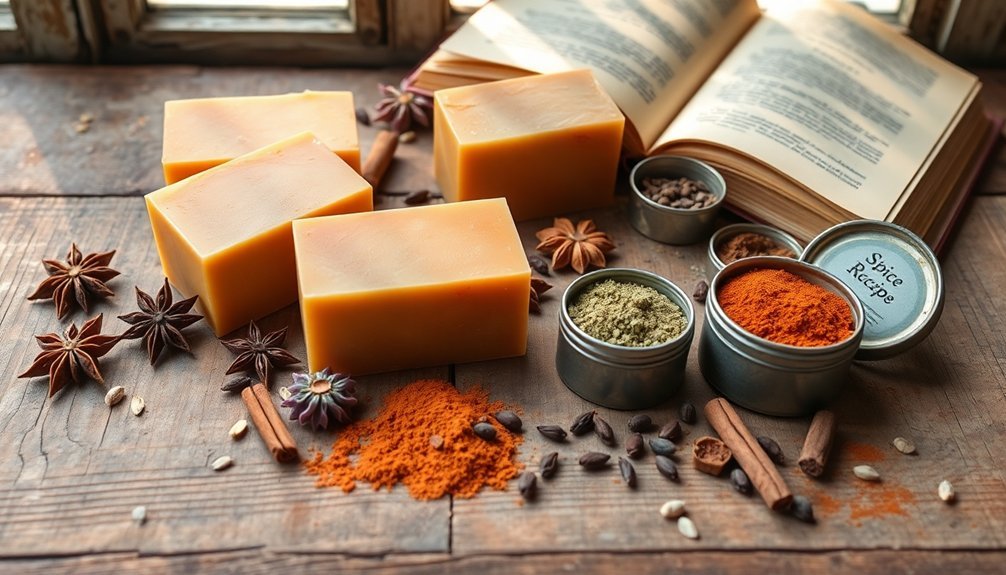
Artisans of medieval kitchens never imagined their carefully blended spice mixes would one day scent our bathing rituals. Yet these historic spice combinations for handcrafted soaps offer unique fragrance profiles that connect us to centuries of tradition.
Powder fort, a medieval spice blend featuring ginger, pepper, and cloves, provides an excellent foundation for soap scents. You'll find these inexpensive spices create warm, inviting aromas reminiscent of holiday celebrations.
When working with these spices, consider using their essential oils in small quantities to maintain skin safety while capturing their aromatic essence.
Beyond scent, ingredients like cinnamon and nutmeg provide natural exfoliation and skin benefits.
Try incorporating dried cloves or cinnamon sticks directly into your soap for visual appeal that honors historical practices while enhancing your bathing experience.
Medieval Powder Fort: The Forgotten Aromatic Blend
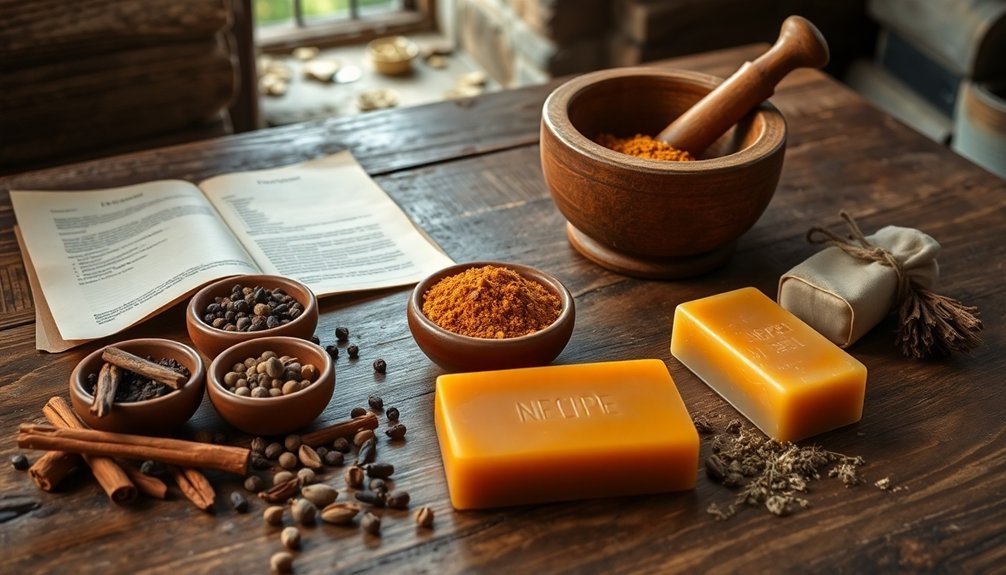
While largely forgotten in modern kitchens, Medieval Powder Fort once dominated European cooking as a versatile spice blend that's now finding new life in artisanal soap making.
Dating back to 1390's "The Forme of Cury," this aromatic mixture primarily featured ginger, pepper, and salt, though fancier versions incorporated cinnamon, cloves, and precious saffron.
You'll find the scent profile reminiscent of traditional holiday foods, making Medieval Powder Fort an excellent choice for seasonal soap creations.
The blend's adaptability—varying from elaborate formulations to simpler combinations—gives you flexibility when crafting soaps with historical authenticity.
Until the Victorian era, this spice mixture remained a staple in English and American households before gradually disappearing from common use, representing a fascinating culinary tradition worth reviving in your handcrafted soaps.
Victorian Kitchen Pepper for Luxurious Cleansing
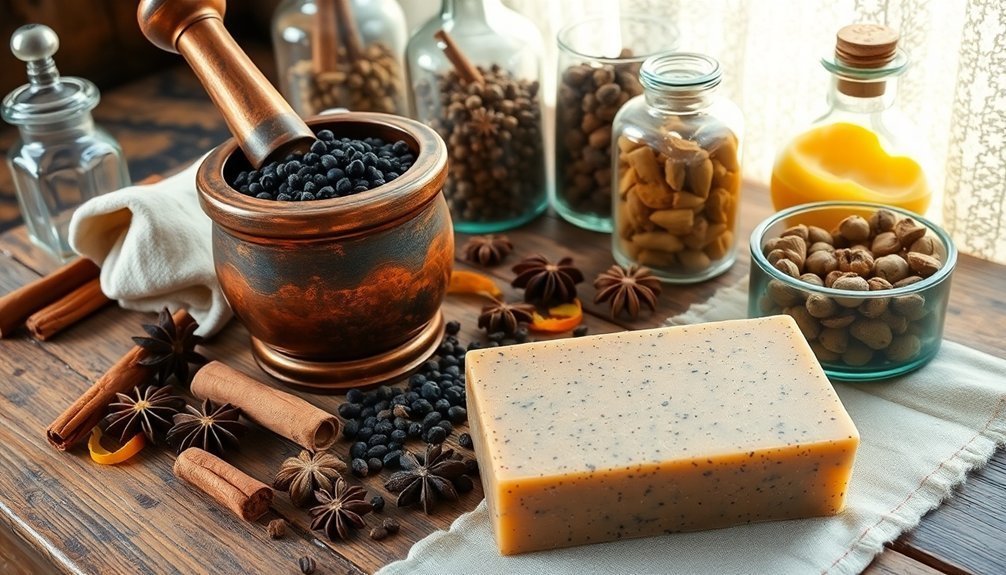
You'll find Victorian Kitchen Pepper brings a touch of historical elegance to your handcrafted soaps, combining traditional spices like ginger and pepper with exfoliating salt.
This aromatic blend offers skin-loving benefits while connecting your modern soap creations to England's rich culinary heritage.
The festive scents of this spice mixture transform ordinary cleansing bars into luxurious sensory experiences that celebrate Victorian traditions.
Historical Cleansing Elegance
Although rarely associated with personal hygiene today, Victorian kitchen pepper once adorned the finest handcrafted soaps of the 19th century. This distinctive blend—typically featuring pepper, ginger, and salt—elevated everyday cleansing routines to luxurious experiences that delighted the senses.
You'll find that incorporating these historical spice combinations into your handmade soap creates products with both aromatic appeal and cleansing benefits.
The tradition of using cinnamon and cloves in soap making draws directly from early modern English practices, where affordable spices served multiple purposes in households.
Spice-Infused Skin Benefits
Victorian Kitchen Pepper offers more than historical curiosity—it delivers remarkable benefits for skin health through its unique composition of antimicrobial spices.
You'll appreciate how ginger and pepper in these blends naturally combat skin bacteria while promoting overall epidermal health.
When infused in soaps, warming spices like cinnamon enhance your blood circulation, creating a natural glow while cleansing.
The eugenol in cloves soothes irritated skin and provides anti-inflammatory relief where you need it most.
For truly luxurious results, look for formulations containing saffron—this precious spice brings antioxidant protection and natural brightening effects to aging skin.
Beyond the spice-infused skin benefits, you'll discover these aromatic combinations elevate your bathing experience, transforming a simple cleansing routine into a mood-enhancing ritual with historical significance.
Colonial American Spice Sachets for Bath Soaps
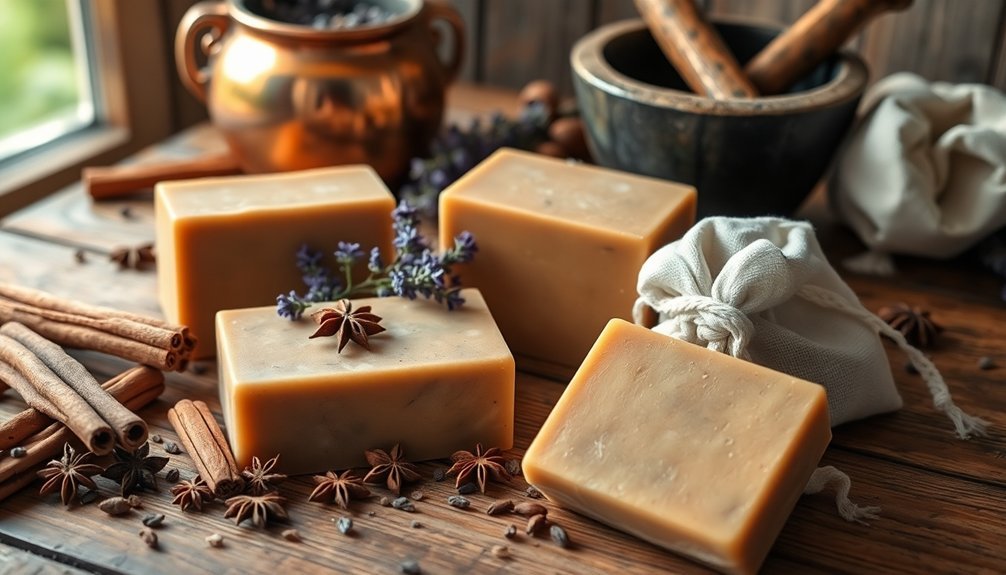
Colonial Americans crafted fragrant spice sachets that you'll find surprisingly similar to our modern potpourri, using muslin-wrapped cinnamon, cloves, and nutmeg to infuse their handmade soaps with natural scents.
You'd recognize many of the frontier herbs they selected, as these ingredients pulled double duty in their kitchens and medicine cabinets before becoming bath-time luxuries.
The practice wasn't merely for fragrance—you're actually tapping into centuries-old wisdom when you use spice-infused soaps, as colonists valued these botanicals for their natural antibacterial properties that enhanced cleanliness.
Colonial Bath Sachets
Aromatic spices from distant shores found their way into America's early bathing rituals through carefully crafted bath sachets.
These fragrant bundles, precursors to modern essential oil blends, elevated colonial bathing from mere necessity to sensory experience.
You'll find colonial bath sachets were typically made from:
- Lightweight muslin fabric that allowed scent diffusion while containing the spices
- Cinnamon, cloves, and nutmeg mixtures that reflected the era's valuable trade goods
- Ginger additions believed to stimulate skin circulation during bathing
- Lavender or rosemary to enhance the aromatic profile
- Carefully proportioned ingredients that balanced fragrance with perceived health benefits
These sachets represented both practical hygiene and luxury indulgence, as many spices remained expensive commodities that only privileged colonists could regularly enjoy in their bathing routines.
Frontier Herb Traditions
While European settlers brought their bathing customs across the Atlantic, the American frontier's unique challenges and resources transformed these traditions into something distinctly American.
You'll find that 18th-century colonists cleverly adapted by creating spice sachets for their bath soaps, blending Old World techniques with local ingredients. These aromatic bundles contained cinnamon, cloves, and nutmeg—spices that served dual purposes of fragrance and skin benefits.
The frontier's practical mindset meant these sachets weren't just luxuries; they repelled insects while making bathing more pleasant. Cooking staples like ginger and pepper found their way into these bath accessories, demonstrating remarkable resourcefulness.
When you recreate these historic combinations, you're connecting with a distinctly American tradition that emerged when settlers adapted European bathing customs to frontier life.
Ottoman Empire's Rose and Cinnamon Formula
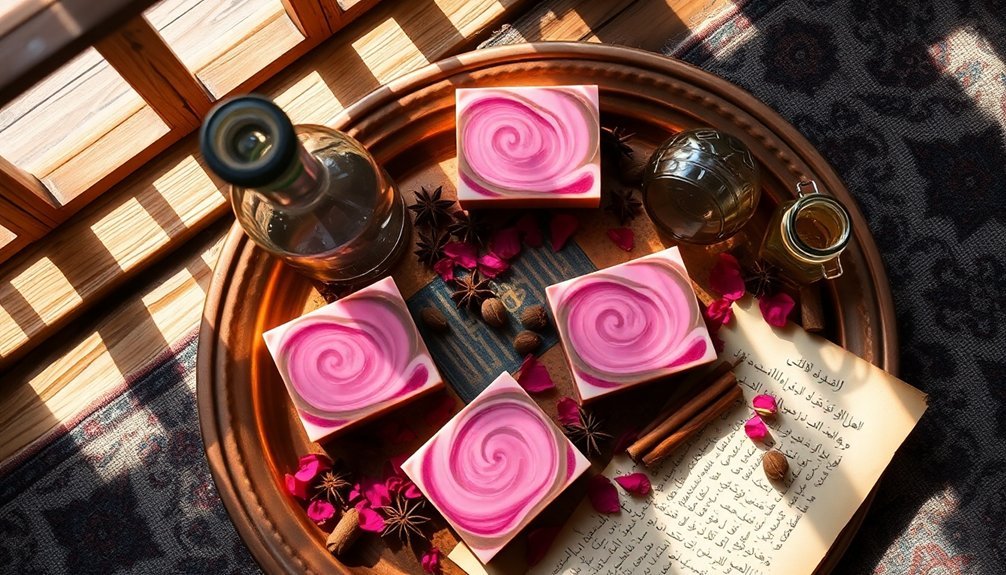
Throughout the Ottoman Empire's rich cultural history, the combination of rose and cinnamon emerged as a signature formula for luxurious soaps that served both practical and aesthetic purposes.
This pairing wasn't just about pleasing scents—it offered genuine benefits for your skin.
- Rose essential oil provided deep moisturization while imparting a luxurious floral fragrance
- Cinnamon's natural antiseptic properties helped combat odors and cleanse the skin
- Together, these ingredients improved skin texture and appearance
- The warming qualities of cinnamon complemented the soothing nature of rose
- This formula reflected the Ottoman's advanced understanding of natural ingredients
You'll find this historic combination still influences modern soap making, as artisans continue to appreciate how these complementary ingredients deliver both sensory pleasure and practical skincare benefits.
Ancient Egyptian Kyphi-Inspired Soap Blends
You can recreate Egypt's sacred kyphi in your handcrafted soaps by combining frankincense, myrrh, and cinnamon with honey as a natural binder.
Temple-inspired formulations might incorporate juniper, cardamom, and raisins—ingredients ancient priests used to create purifying incense for daily rituals.
For a truly royal experience, try adding saffron and lotus essence, believed to cleanse both body and spirit in pharaonic purification ceremonies.
Sacred Kyphi Ingredients Reimagined
Ancient Egypt's sacred Kyphi incense offers a treasure trove of aromatic inspiration for modern soap artisans.
You can capture the essence of this ceremonial blend by reimagining traditional ingredients in your soap formulations.
The complex scent profile of Kyphi translates beautifully to handcrafted soaps through:
- Essential oils like myrrh and frankincense that bring spiritual depth
- Honey for both symbolic significance and natural moisturizing properties
- Wine-soaked raisin extracts for a unique, subtle sweetness
- Spice blends featuring cinnamon and juniper for warmth and complexity
- Natural colorants such as turmeric and cocoa powder to represent the earthy tones
Temple Ritual Aromatic Components
Sacred rituals of Egyptian temples come alive through carefully crafted Kyphi-inspired soap blends that honor ancient purification traditions. When you create these aromatic soaps, you're connecting with practices that once pleased gods and purified sacred spaces.
| Ritual Component | Traditional Use | Modern Soap Benefit |
|---|---|---|
| Myrrh & Frankincense | Temple offerings | Deep earthy base notes |
| Cinnamon & Spices | Spiritual elevation | Warming sensation |
| Honey & Wine | Binding agents | Natural moisturizers |
The meticulous preparation of Kyphi required precise grinding and blending, much like the careful formulation of handcrafted soaps. These aromatic components weren't just pleasant fragrances—they carried spiritual significance that bridged life and death. By incorporating these sacred elements into your soap making, you're reviving a sensory experience that transcends time.
Royal Purification Formulas
While ordinary citizens relied on basic cleansing methods, pharaohs and nobility enjoyed elaborate purification rituals that elevated personal hygiene to divine art.
These royal formulas drew heavily from kyphi traditions, incorporating exotic spices and natural colorants to create luxurious cleansing experiences.
You can recreate these royal blends in your handcrafted soaps by including:
- Myrrh and frankincense for their spiritual purification properties
- Cinnamon and cardamom for warming, antiseptic benefits
- Honey and wine as binding agents that soften skin
- Ground saffron and indigo as natural colorants that signify royalty
- Crushed rose petals and juniper berries for freshness and protection
Renaissance Italian Citrus and Spice Combinations
During the vibrant period of Renaissance Italy, artisans crafted exquisite soap formulations by combining zesty citrus elements with warming spices, creating aromatic experiences that transcended mere cleansing. You'll find that lemon essential oil was particularly prized for its invigorating scent and antibacterial properties, making it a staple in handcrafted Renaissance soaps.
| Citrus Element | Complementary Spice | Aromatic Effect |
|---|---|---|
| Lemon Peel | Cinnamon | Invigorating |
| Orange Essence | Cloves | Uplifting |
| Bergamot Oil | Nutmeg | Calming |
| Citron Extract | Ginger | Warming |
| Lime Zest | Star Anise | Revitalizing |
These fragrant combinations weren't merely pleasant—they reflected the Renaissance appreciation for botanical ingredients that could both cleanse the body and elevate the spirit, creating luxury items that celebrated Italy's rich cultural heritage.
Traditional Chai Spice Mixtures for Exfoliating Bars
Ancient in origin yet timeless in appeal, traditional chai spice mixtures have found a perfect home in modern exfoliating soap bars.
You'll discover these South Asian chai spice blends bring centuries of cultural heritage to your daily cleansing ritual.
- Cinnamon, ginger, cloves, cardamom, and black pepper create the signature aromatic profile that warms your senses.
- These natural ingredients double as gentle exfoliants, effectively removing dead skin cells.
- The spices' skin-soothing properties enhance your soap's moisturizing capabilities.
- Each ingredient carries medicinal benefits historically valued in South Asian traditions.
- Your handcrafted bars reflect the growing luxury trend of incorporating cultural elements into personal care.
Moroccan Ras El Hanout for Exotic Soap Creations
Moving from the mists of South Asia to the vibrant souks of North Africa, we encounter a spice blend that elevates handcrafted soaps to extraordinary heights.
Ras El Hanout, meaning "head of the shop," represents a premium mixture of a merchant's finest spices, including cumin, coriander, cinnamon, and sometimes precious saffron.
When you incorporate this complex blend into your soap bars, you'll create products with both aromatic luxury and potential skin benefits.
The natural antioxidant and soothing properties of these spices enhance the therapeutic qualities of your creations.
Be mindful of proportions when working with Ras El Hanout—too much can overwhelm your formula.
Aim for a balanced integration that allows the exotic fragrance to shine without compromising texture, giving your customers an authentic sensory journey through Moroccan traditions.
Nordic Winter Spice Blends With Juniper and Clove
From the frost-laden forests of Scandinavia comes a distinctive spice tradition that's perfectly suited for winter soap crafting. The combination of juniper and clove creates an authentically Nordic experience that connects you to centuries of northern botanical wisdom.
- Juniper's woody aroma brings fresh, antibacterial properties to your soap creations.
- Clove adds warmth and antiseptic qualities while promoting relaxation.
- Together, they evoke the cozy atmosphere of traditional Nordic winter gatherings.
- These spices reflect ancient practices of using local botanicals for personal care.
- Juniper's historical use as a preservative highlights its multifunctional role in Scandinavian culture.
When you incorporate these Nordic winter spices into your handcrafted soaps, you're not just creating cleansers—you're capturing the essence of seasonal cycles and heritage.
Frequently Asked Questions
What Is the Oldest Recipe for Soap?
The oldest soap recipe you'll find dates back to 2800 BC in Babylon. You'd have created it by combining water, alkali, and cassia oil, long before modern soap-making techniques existed.
What Spices Can You Add to Soap?
You can add cinnamon for warmth, ginger for invigoration, cloves for antimicrobial benefits, nutmeg for comfort, and turmeric or paprika for color. Don't forget essential oils from these spices, but use them sparingly.
What Scents Go Well Together for Soap?
You'll find citrus and mint create invigorating combinations, while lavender pairs beautifully with vanilla for relaxation. Don't overlook cinnamon with orange or rose with sandalwood for luxurious, balanced soap fragrances.
What Are Old English Spices?
Old English spices primarily included pepper, ginger, salt, and cinnamon. You'll find pepper was most dominant. They'd use blends like powder fort since 1390, while saffron and cloves were reserved for nobility's special dishes.
In Summary
You've now discovered eight ancient spice combinations that can transform your homemade soaps into aromatic treasures with fascinating historical roots. Don't be afraid to experiment and adapt these traditional blends to suit your preferences. Whether you're crafting gifts or selling your creations, these time-tested formulas will connect you to centuries of aromatic wisdom while providing unique, sensory-rich bathing experiences for modern life.
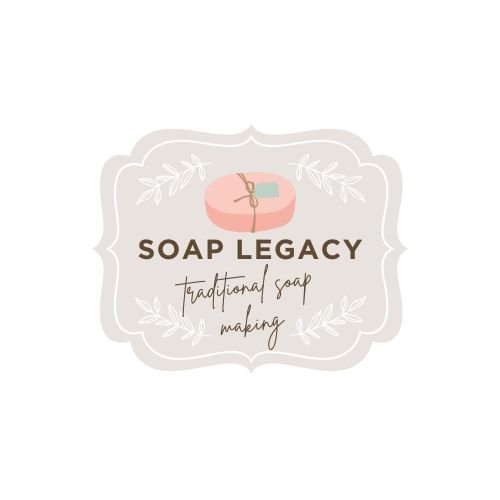
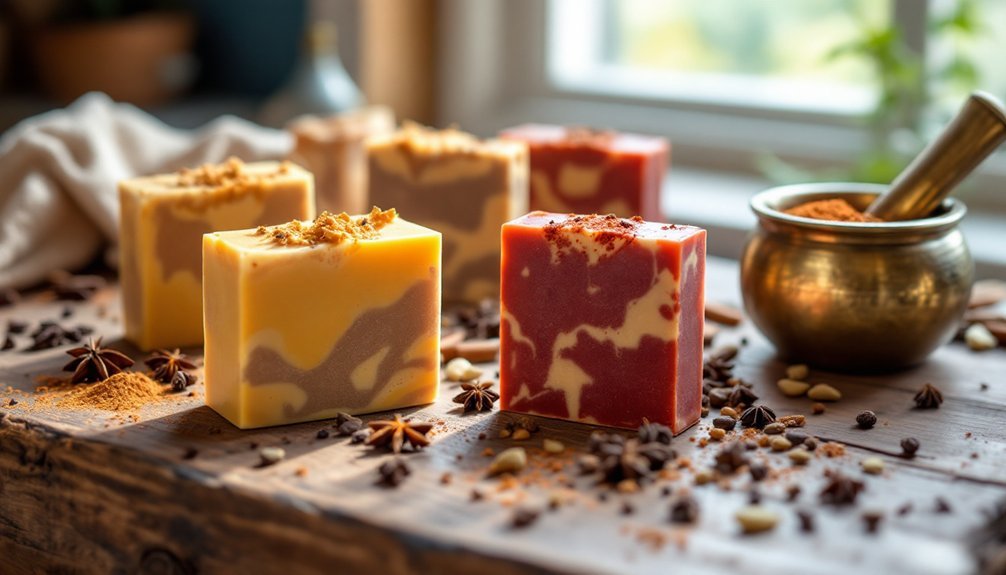
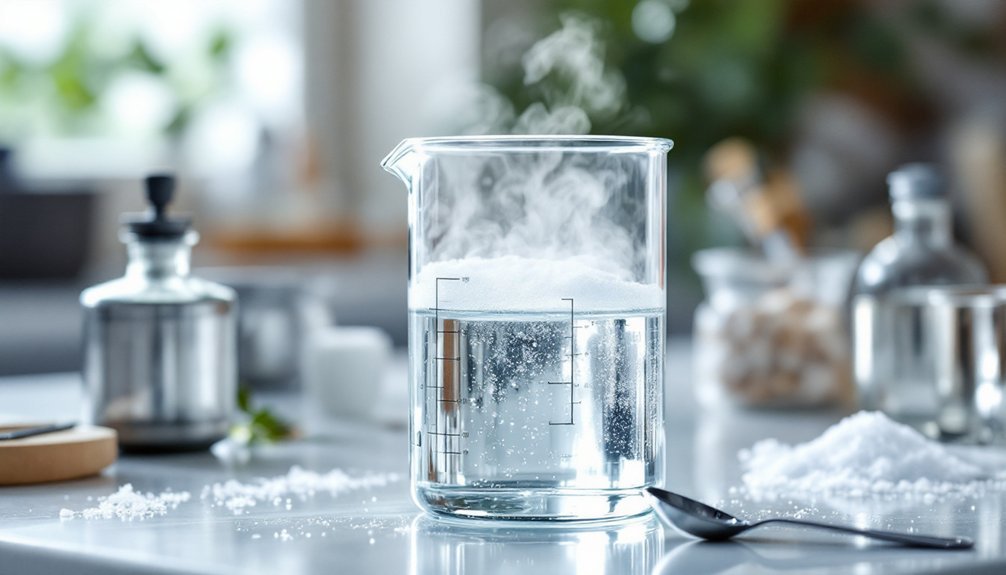
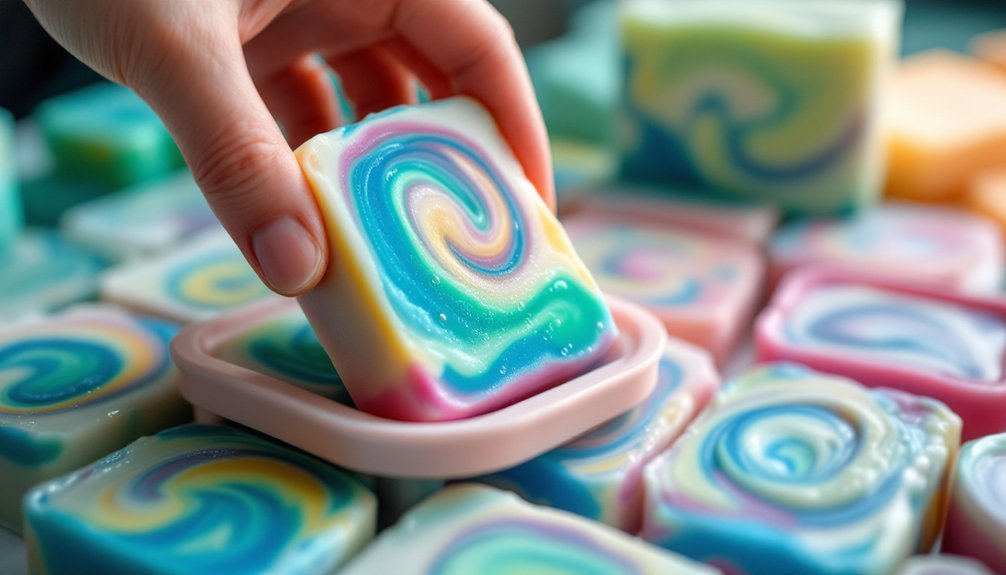

Leave a Reply